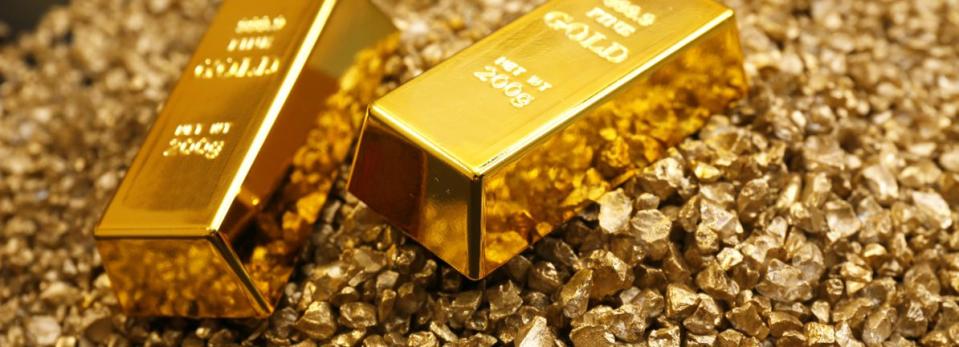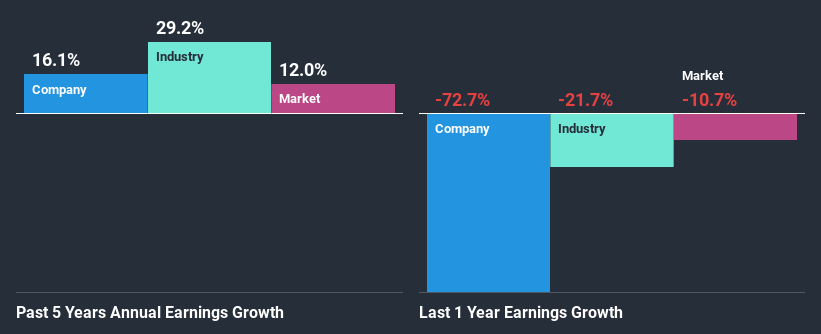Can Mixed Fundamentals Have A Negative Impact on Trans-Siberian Gold plc (LON:TSG) Current Share Price Momentum?

Trans-Siberian Gold (LON:TSG) has had a great run on the share market with its stock up by a significant 21% over the last week. However, we wonder if the company's inconsistent financials would have any adverse impact on the current share price momentum. Specifically, we decided to study Trans-Siberian Gold's ROE in this article.
ROE or return on equity is a useful tool to assess how effectively a company can generate returns on the investment it received from its shareholders. Simply put, it is used to assess the profitability of a company in relation to its equity capital.
See our latest analysis for Trans-Siberian Gold
How To Calculate Return On Equity?
ROE can be calculated by using the formula:
Return on Equity = Net Profit (from continuing operations) ÷ Shareholders' Equity
So, based on the above formula, the ROE for Trans-Siberian Gold is:
5.6% = US$4.4m ÷ US$78m (Based on the trailing twelve months to June 2020).
The 'return' is the yearly profit. Another way to think of that is that for every £1 worth of equity, the company was able to earn £0.06 in profit.
What Is The Relationship Between ROE And Earnings Growth?
Thus far, we have learned that ROE measures how efficiently a company is generating its profits. Depending on how much of these profits the company reinvests or "retains", and how effectively it does so, we are then able to assess a company’s earnings growth potential. Assuming all else is equal, companies that have both a higher return on equity and higher profit retention are usually the ones that have a higher growth rate when compared to companies that don't have the same features.
Trans-Siberian Gold's Earnings Growth And 5.6% ROE
At first glance, Trans-Siberian Gold's ROE doesn't look very promising. We then compared the company's ROE to the broader industry and were disappointed to see that the ROE is lower than the industry average of 17%. However, the moderate 16% net income growth seen by Trans-Siberian Gold over the past five years is definitely a positive. So, the growth in the company's earnings could probably have been caused by other variables. For instance, the company has a low payout ratio or is being managed efficiently.
We then compared Trans-Siberian Gold's net income growth with the industry and found that the company's growth figure is lower than the average industry growth rate of 29% in the same period, which is a bit concerning.
The basis for attaching value to a company is, to a great extent, tied to its earnings growth. The investor should try to establish if the expected growth or decline in earnings, whichever the case may be, is priced in. Doing so will help them establish if the stock's future looks promising or ominous. One good indicator of expected earnings growth is the P/E ratio which determines the price the market is willing to pay for a stock based on its earnings prospects. So, you may want to check if Trans-Siberian Gold is trading on a high P/E or a low P/E, relative to its industry.
Is Trans-Siberian Gold Using Its Retained Earnings Effectively?
The high three-year median payout ratio of 65% (or a retention ratio of 35%) for Trans-Siberian Gold suggests that the company's growth wasn't really hampered despite it returning most of its income to its shareholders.
Moreover, Trans-Siberian Gold is determined to keep sharing its profits with shareholders which we infer from its long history of three years of paying a dividend. Existing analyst estimates suggest that the company's future payout ratio is expected to drop to 32% over the next three years. As a result, the expected drop in Trans-Siberian Gold's payout ratio explains the anticipated rise in the company's future ROE to 16%, over the same period.
Conclusion
On the whole, we feel that the performance shown by Trans-Siberian Gold can be open to many interpretations. While no doubt its earnings growth is pretty respectable, the low profit retention could mean that the company's earnings growth could have been higher, had it been paying reinvesting a higher portion of its profits. An improvement in its ROE could also help future earnings growth. That being so, the latest analyst forecasts show that the company will continue to see an expansion in its earnings. To know more about the latest analysts predictions for the company, check out this visualization of analyst forecasts for the company.
This article by Simply Wall St is general in nature. It does not constitute a recommendation to buy or sell any stock, and does not take account of your objectives, or your financial situation. We aim to bring you long-term focused analysis driven by fundamental data. Note that our analysis may not factor in the latest price-sensitive company announcements or qualitative material. Simply Wall St has no position in any stocks mentioned.
Have feedback on this article? Concerned about the content? Get in touch with us directly. Alternatively, email editorial-team@simplywallst.com.

 Yahoo Finance
Yahoo Finance 
